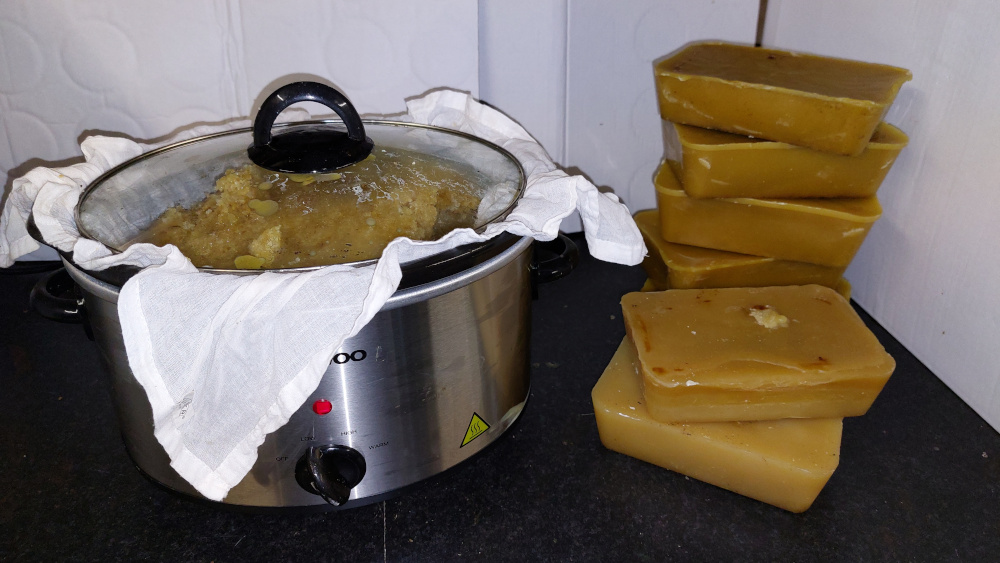Seasonal Management - Recovering Wax
It takes a lot of honey and even more hard work for honeybees to make the wax they use for constructing and maintaining their nest and larder. Made from tiny scales secreted from glands under their abdomen, it is a precious commodity in the hive, and for the beekeeper it's a valuable hive product that can and should always be re-used where possible. The cost of new foundation alone is a good incentive for keeping every scrap of wax. It would be a rarity to return from the apiary without a ball of brace comb and scrapings from the colony inspections in the tool box or boot of the car!
Keeping it Simple
Mid season, after extracting the spring honey crop, there is an accumulation of wax cappings, brace comb, frames of super and brood comb that are either past there best or not in a condition to return to the hive. It can be surprising just how much wax you end up with. The old wax has a value but will require rendering back to clean condition before you can reuse it for moulding, candle making, cosmetics, or to trade in for new foundation. Cleaning up, or 'rendering' old wax, it has to be said, is probably the least favourite of all beekeeping jobs. It can be a messy business that involves heat, and there are several ways to do this, some easier than others, and some downright dangerous. A relatively simple way that doesn't involve the kitchen cooker, stove, oven or microwave (which is highly dangerous and not recommended), or too much expense, is to use a slow cooker, a square of muslin or honey filter bag, and three or four takeaway containers, the kind your favourite tikka masala comes in! Most supermarkets sell relatively cheap slow cookers (3.5 ltr capacity is sufficient), and a honey filter bag or square of muslin is only a couple of quid. All a good investment!

An inexpensive 3.5 ltr slow cooker with a muslin square in the ceramic pot, loaded with old wax and turned on to the low setting. The clean wax blocks weigh around 500g each.
Equipment
You will need a worktop area with power source, slow cooker, filter bag / muslin square, plastic measuring jug or similar, suitable takeaway containers or similar, plastic bucket or similar to receive used filter bag and waste material, and suitable gloves. You should also consider how you will deal with any spillages, beeswax is very difficult to remove from some surfaces.
Process
The process is straight forward - prepare a clear worktop area, the slow cooker, utensils and containers before starting. Line the inside of the slow cooker's ceramic pot with the filter bag or muslin, pour in half a litre of water then fill it with the old wax, replace the lid and turn it on. The hot water and steam given off disperses the heat and helps speed up the melting process, the wax will remain floating above the water. As the wax melts the level will drop, top it up with more old wax until it is 80% full of molten wax. Don't overfill it! Once you are happy the wax is all melted, carefully lift out the filter bag or muslin (hold the muslin by the four corners) and allow the hot wax to drip back into the pot. Put the muslin filter and debris into a container to cool. Use a plastic measuring jug to transfer the hot wax into clean takeaway containers or something similar, and allow to cool. Once cooled the clean wax block can be removed from the container and any honey residue on the underside of the block can be washed off with water leaving it nice and clean. Job done!
The muslin peels off the waste easily once it's cool ready for reuse. The waste can go in the compost.
Try the Colony Management Quiz
About the 'My Beekeeping Kit' website.
Contact Iain Dewar for enquiries, suggestions, corrections and contributions for improving the notes. Always welcome!